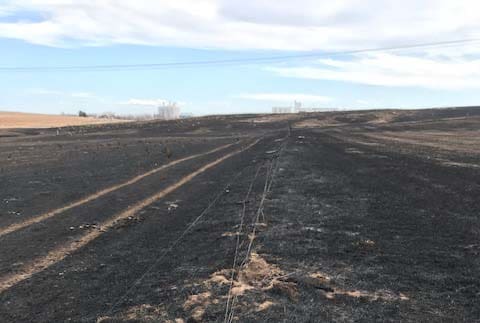Manhattan, Kan. — Natural disasters can happen with little warning, and in Kansas, those often come in the form of tornadoes, windstorms, fires or ice storms.
Understanding the phases of a disaster can help livestock producers anticipate what might be needed following such an event on the ranch, said the beef cattle experts at Kansas State University.
Talking on a recent Cattle Chat podcast, veterinarians Brad White and Brian Lubbers were joined by Justin Waggoner, beef cattle extension specialist located in southwest Kansas. Waggoner had a firsthand account with a wildfire.
“In many of these disasters, there is little to no time to prepare. In my case, we had a 10-minute warning on a fire that was two miles away and was pushed by a 50 mile per hour wind,” Waggoner said. “There was enough time to quickly hook up the stock trailer and leave before the fire reached our property.”
Waggoner said regardless of the type of disaster that has occurred, the phases of response are similar.
“In the first 24-48 hours following the disaster, people are processing the initial shock and doing damage assessments,” Waggoner said. “In a wildfire scenario, fences and electrical poles may be gone.”
Locating the livestock and assessing their immediate health needs to happen quickly, Lubbers said.
“Of the disasters that I’ve been involved with, one of the biggest challenges was simply getting water to the livestock,” Waggoner said, adding that assessing feed resources also needs to happen quickly.
“With a fire scenario, wheat pasture doesn’t burn so that is a potential grazing resource for cattle,” Waggoner said.
After the damage assessment and immediate health evaluations are completed, next is a longer-term maintenance phase, said the experts.
“In this phase, producers and their veterinarians will be looking at the long-term health of the livestock and in some cases may be making plans for carcass disposal and euthanasia depending on the type of disaster that has occurred,” Lubbers said.
In thinking through disaster scenarios, White offered the following advice: “While we can’t fully prepare for all scenarios, we can come up with a plan ahead of time where we have a list of emergency numbers, know what our backup feed resources might be, and how to best get cattle access to fresh, uncontaminated water. Having that plan will help us get through the initial shock and move into the recovery phase more quickly.”
To hear the full discussion, listen to the Cattle Chat podcast online.













